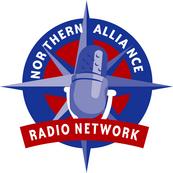
« Teddy Picks An Interesting Deadline | Main | Ken Lay Can't Cheat Death »
George at Seixon has followed my posts about the mobile laboratories that the CIA and the Iraqi Survey Group now insist were designed for hydrogen production. I'll post Part III of ChemicalConsultant's critique of that analysis later tonight, but George has a few pertinent questions of his own. Besides the fact that Iraq's oil refineries could have produced all the high-quality hydrogen needed for any meteorological needs, George points out that the Iraqis had already bought several mobile production facilities abroad, and at a much lower cost:
The simplest question one could have asked would be whether or not Iraq was able to easily obtain hydrogen generators rather than having to fabricate their own. Many have scoffed at this question, claiming that Iraq was so bogged down with sanctions that they probably had to make do with DIY solutions. A lazy assumption will often lead to a wrongheaded conclusion, and in this case, quite horrendously wrong. One only needs to comb through the Oil for Food Program Distribution Plans to find a most inconvenient fact that would seem to blow the whole story out of the water.In January 2000 during Phase VII, the UN approved the delivery of one 1 m3/hour electrolytic hydrogen generator (07-30-01065), in addition to 2500 meteorological balloons of various sizes ranging from 10g to 1000g (07-30-01064). During Phase VIII in July 2000, the UN approved the delivery of two 3 m3/hour electrolytic hydrogen generators (07-55-01143), in addition to 2000 weather balloons (07-55-01145). February 2001, during Phase IX, the UN approved the delivery of two 3 m3/hour electrolytic hydrogen generators complete with spares, installation materials, and consumables for 5 years (07-55-00017). Also approved were 100 3KVA electric gasoline generators (07-55-00016) and an assortment of weather balloons. In August 2001, for Phase X, the UN approved five 3 m3/hour electrolytic hydrogen generators with consumables for 5 years, 100 more electric generators, and more weather balloons. The same order was approved in January 2002 for Phase XI. For June 2002 during Phase XII, three more hydrogen generators, 100 more electric generators, and of course more balloons. The itemized list for January 2003 and Phase XIII, the last phase of the program, is not available on the Oil for Food website.
From Phase VII through Phase XII a total of 17 electrolytic hydrogen generators were approved for sale to Iraq under the Oil for Food Program. One of these produced 1 m3/hour, while the remaining 16 produced 3 m3/hour. By comparison, the supposed setup for the production of hydrogen in the trailers would produce considerably less than 3 m3/hour, according to the Duelfer report’s analysis of the documentation provided by the Iraqis. The exact production rate is never specified in the report, only that half the process of filling up 10 m3 on the tanks (5 x 40l x 50 bar) would take 3 hours, for an estimated 1.7 m3/hour production rate.
With these facts, which have most likely never been revealed until now, it would seem that Dr. David Kay may have been more right than wrong in suggesting the notion of hydrogen production to have been a rather silly one. Why would the Iraqis go to so much trouble to fabricate large, inefficient, road-bound hydrogen generators when they already had access to and could order smaller, efficient, portable systems? In fact, the Iraqis were importing and ordering hydrogen generators far more suitable for their needs while building the trailers. The preponderance of evidence suggests that the Iraqis had no reason to create these systems to produce hydrogen, and evaded UN inspection of these vehicles, with a cover story on the shelf in case they were ever found.
Indeed. George wrote this post three months ago, and it covers much more than just this question. In fact, George reminds us that the al-Kindi facility's main purpose was missile development, not meteorological research. Why did Iraq need to build these superfluous and much less efficient mobile hydrogen generators at the same place they developed missiles -- which could conceivably carry CW and BW warheads?
Many questions remain about these mobile laboratories, and the official ISG explanation -- which David Kay called "the silliest one" -- does not begin to answer them.
Sphere ItTrackback Pings
TrackBack URL for this entry is
Listed below are links to weblogs that reference A Brief Aside On Mobile Labs:
» "Hydrogen Production Cover Story" from Presto Agitato
Captain Ed has an interesting three part series (plus an Aside) on the hydrogen production trailers that were mistaken for biological weapons production trailers. I would also recommend this site, at the CIA, as being either informative or illustrative... [Read More]
Tracked on July 6, 2006 2:02 PM

captain*at*captainsquartersblog.com


My Other Blog!
E-Mail/Comment/Trackback Policy
Comment Moderation Policy - Please Read!
Skin The Site








Hugh Hewitt
Captain's Quarters
Fraters Libertas
Lileks
Power Line
SCSU Scholars
Shot In The Dark
Northern Alliance Radio Network
Northern Alliance Live Streaming!



Des Moines Register
International Herald Tribune
The Weekly Standard
Drudge Report
Reason
The New Republic
AP News (Yahoo! Headlines)
Washington Post
Guardian Unlimited (UK)
New York Times
Los Angeles Times
OpinionJournal
Pioneer Press
Minneapolis Star-Tribune
MS-NBC
Fox News
CNN

Design & Skinning by:
m2 web studios
blog advertising

- dave on Another National Health Care System Horror Story
- brooklyn on Hillary Not Hsu Happy
- rbj on Hillary Not Hsu Happy
- Robin S on Requiem For A Betrayed Hero
- Ken on Hillary Not Hsu Happy
- Robin S. on Requiem For A Betrayed Hero
- RBMN on Hillary Not Hsu Happy
- NoDonkey on Another National Health Care System Horror Story
- Robin Munn on Fred Thompson Interview Transcript
- filistro on When Exactly Did Art Die?










